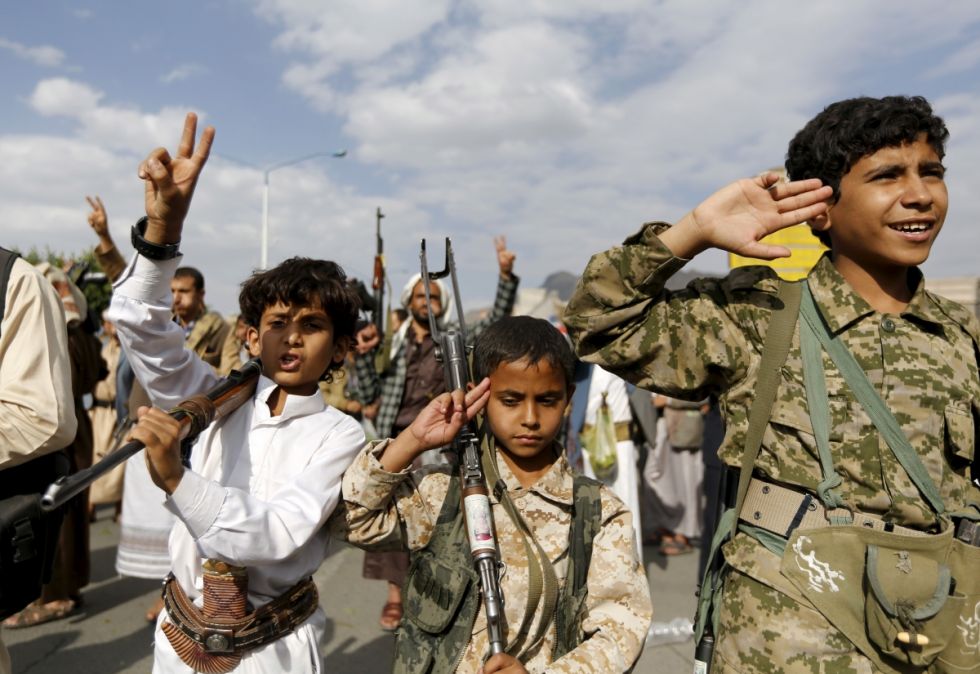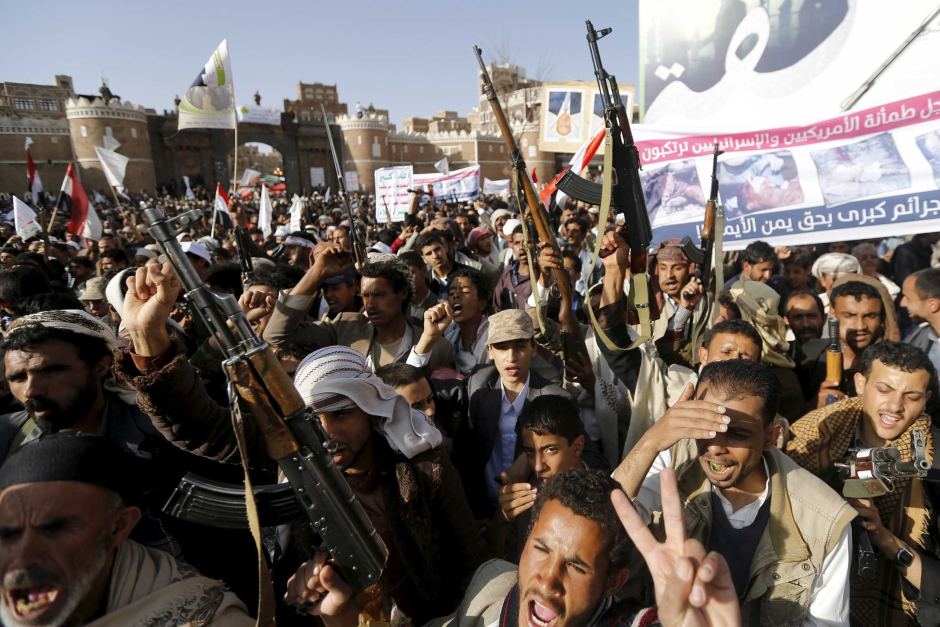YEMEN’S WAR IS A DANGEROUS PROXY IN IRAN’S GLOBAL BATTLE
by Nathalie Goulet

While the world was fixated on the existential threat of ISIS — a terrorist group that controlled mostly rural territory and had limited, if any, backing by foreign states — the Houthi extremists in Yemen have achieved what their counterparts in Iraq and Syria could only dream of: Domination and destabilization of a country already devastated by poverty, tribal conflict and corruption.
For nearly a decade, the Houthis have controlled large parts of Yemen, including the capital of one the world’s poorest countries. They have erected their own terrorist state architecture in Sana’a and used their base to launch missile attacks not only on Riyadh’s airport but Abu Dhabi’s.[1]
And they’ve done it all with the full backing of Iran’s Revolutionary Guard, which even loaned its Yemeni proteges the Iranian revolutionary slogan: “Death to America, Death to Israel, Curse on the Jews, Victory to Islam.”[2]
Evidence of Iranian military involvement in Yemen has become overwhelming. Last year U.S. officials presented evidence that Iran supplied short-range ballistic missiles to Houthi rebels[3] in Yemen, which then were fired at civilian areas of Saudi Arabia, targeting nationals of various countries. Even U.N. Secretary General Antonio Guterres submitted evidence to the Security Council[4] that Iran was supplying ballistic missiles to Houthi rebels in defiance of U.N. resolution 2231.
But it’s not Sana’a — or even Yemen — that the Houthis and their Iranian paymasters are really interested in. It’s the oil shipping routes in the Red Sea, just off Yemen’s coast, as indicated by the Houthi attack on Saudi oil tankers[5] in July which caused the Saudi kingdom to suspend Red Sea oil shipments, a move that affected the world’s oil markets.
Iran is an ideologically driven state and its end-game is, ultimately, to use its proxy occupation of Yemen to control the global oil supply and weaken its Sunni neighbors.

That is shocking, but what’s worse is that the Houthis are not taken seriously in Western capitals. In fact, many mainstream newspapers and politicians in the Western world have taken a surprisingly favorable tone towards them. Just last week, a number of French members of parliament expressed support for the terrorists in the National Assembly, despite their control of Hodeida causing famine on an epic scale. The propaganda value of anti-Saudi sentiment, currently in vogue in some corridors of Western power, and images of starving children presented without context has allowed some opinion-formers to ignore the bigger picture — that the coalition is in Yemen fighting terrorism at the request of the Yemeni government and in the presence of the U.N.
It is a bigger picture that we can no longer afford to ignore, for the sake of Yemen’s children. Amnesty International has criticized the Houthis for systematically recruiting child soldiers to fight on the front lines[6] of the conflict. And the NGO Yemeni Coalition for Monitoring Human Rights Violations revealed at the U.N. Human Rights Council in Geneva that the Houthis have committed atrocities against thousands of Yemeni civilians, including women and children, who have been victims of illegal executions and death under torture.
This makes it all the more astounding that the leader of the Houthi organisation, Mohammed Ali al-Houthi, was last week able to use the Washington Post to communicate to Western audiences and position himself as a reputable leader.
That is not to suggest we should not strive for peace. But to make peace possible in Yemen, the first step is to recognize the enemy for what it is: a regionally dominant but globally dangerous Iranian proxy acting as a terrorist army.
None of this should surprise us; Iran’s appetite for coordinating terrorist attacks on foreign soil is well-established. A recent U.S. State Department report declared that Iran remains one of the world's leading state sponsors of terrorism, with funding networks and operational cells working around the world.
And, last month, the Belgian and French governments charged an Iranian diplomat with planning a bomb attack — just the latest in a long line of global Iranian terror complicity going back to the 1983 Beirut attack carried out by the Shiite group Hezbollah, which killed 241 U.S. Marines.
Once we have recognized the enemy for who they are, we need to combine this with a diplomatic strategy leveraging key regional mediators, such as Oman, which are Western allies while also having well-established back channels to Tehran. For years, Iran has been part of the problem; now we need it to be part of the solution.
But none of this can happen with the continuing support of Houthi terror and war crimes. In order to prevent a new Hezbollah coming to pass in Yemen, we must shut down its fundraising and supply lines from Iran and its proxies around the world. Failure to do so would be one of the biggest geopolitical — and humanitarian — failures of our time.
Footnotes
[1] https://www.haaretz.com/middle-east-news/yemen-rebels-say-hit-uae-s-abu-dhabi-airport-with-drone-1.6316387
[2] https://www.jpost.com/Middle-East/Curse-the-Jews-Yemens-Houthi-rebel-slogan-handed-out-at-university-569074
[3] https://www.theguardian.com/world/2017/dec/14/us-gives-evidence-iran-supplied-missiles-that-yemen-rebels-fired-at-saudi-arabia
[4] https://www.theguardian.com/world/2017/dec/14/iran-ballistic-missiles-yemen-houthi-rebels-un
[5] https://www.forbes.com/sites/ellenrwald/2018/07/25/attack-on-saudi-oil-tanker-in-red-sea-prompts-halt-to-oil-shipments/#74b80510906a
[6] https://www.amnesty.org/en/latest/news/2017/02/yemen-huthi-forces-recruiting-child-soldiers-for-front-line-combat/